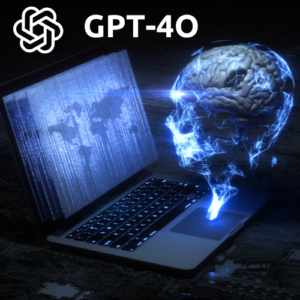Get trained in Automation Engineer Salesforce Dev Salesforce Admin Cyber Security Business Analyst at Wise Quarter
OpenAI has recently unveiled its latest flagship model, GPT-4 Omni (GPT-4o), which represents a significant leap forward in artificial intelligence. The new model integrates advanced capabilities across audio, vision, and text, enabling real-time processing and multi-modal reasoning. This breakthrough is set to revolutionize various applications, from personal assistants to complex data analysis.
Table Of Content
Key Features and Capabilities
Implications and Use Cases
The introduction of GPT-4o brings a multitude of potential applications across various fields:
Customer Service: With its ability to understand and respond to voice commands and visual cues, GPT-4o can provide more efficient and personalized customer support.
Accessing GPT-4o is straightforward. OpenAI has integrated this new model into its existing ChatGPT platform, making it available for current users. To see if you have access, simply log into your ChatGPT account and look for updates indicating the availability of GPT-4o4.

There are multiple ways for users and organizations to leverage the power of GPT-4o:
GPT-4o will soon be accessible to free users of OpenAI’s ChatGPT chatbot. When it becomes available, it will replace the existing default model for these users. Free users will have limited message access and will not be able to use some advanced features such as vision, file uploads, and data analysis.
Subscribers to OpenAI’s paid ChatGPT service will receive unrestricted access to GPT-4o, enjoying all its features without limitations.
Developers can integrate GPT-4o into their applications through OpenAI’s API, enabling them to fully utilize the model’s capabilities for various tasks.
OpenAI has incorporated GPT-4o into desktop applications, including a new app for Apple’s macOS, which was launched on May 13.
Businesses can develop custom versions of GPT-4o tailored to specific needs or departments. These customized models can be distributed to users via OpenAI’s GPT Store.
Users can explore GPT-4o’s capabilities in a preview mode within the Microsoft Azure OpenAI Studio. This environment is designed to handle multimodal inputs like text and vision. The initial release allows Azure OpenAI Service customers to experiment with GPT-4o’s features in a controlled setting, with plans for future expansion.

Here’s a brief comparison of GPT-4, GPT-4 Turbo, and GPT-4o:
| Feature/Model | GPT-4 | GPT-4 Turbo | GPT-4o |
| Release Date | March 14, 2023 | November 2023 | May 13, 2024 |
| Context Window | 8,192 tokens | 128,000 tokens | 128,000 tokens |
| Knowledge Cutoff | September 2021 | April 2023 | October 2023 |
| Input Modalities | Text, limited image handling | Text, images (enhanced) | Text, images, audio (full multimodal capabilities) |
| Vision Capabilities | Basic | Enhanced, includes image generation via DALL-E 3 | Advanced vision and audio capabilities |
| Multimodal Capabilities | Limited | Enhanced image and text processing | Full integration of text, image, and audio |
| Cost | Standard | Three times cheaper for input tokens compared to GPT-4 | 50% cheaper than GPT-4 Turbo |
GPT-4o marks a pivotal moment in the development of artificial intelligence, combining speed, efficiency, and multimodal capabilities to offer unprecedented utility and versatility. As OpenAI continues to push the boundaries of what AI can achieve, the potential for innovation across industries grows exponentially.